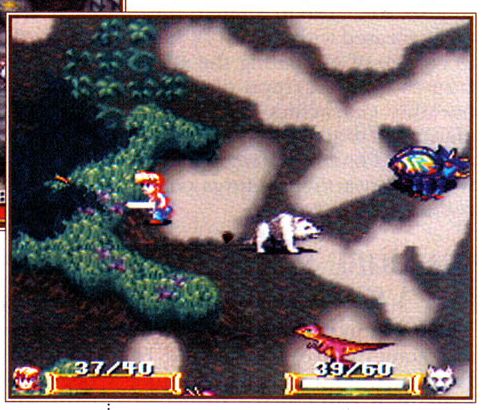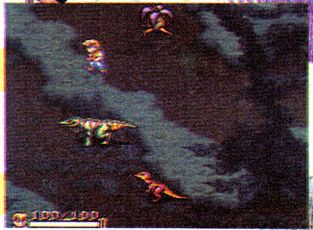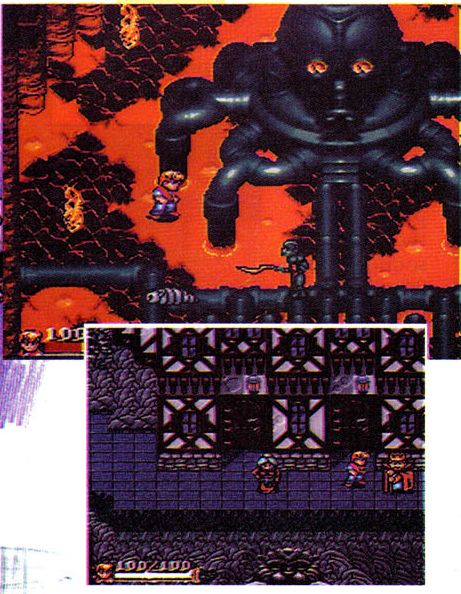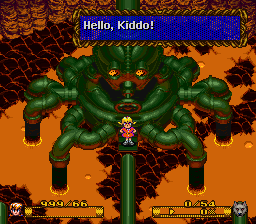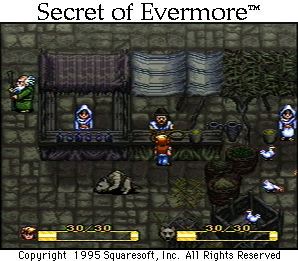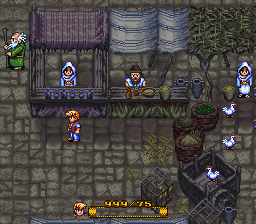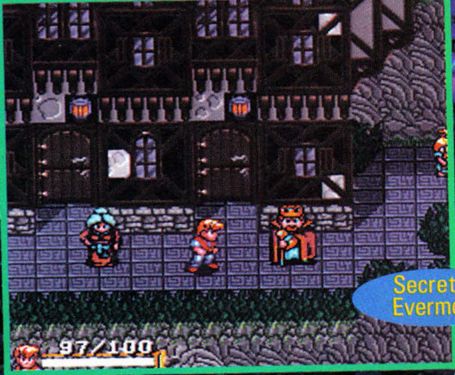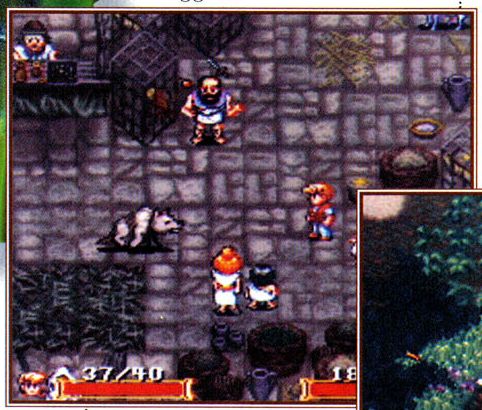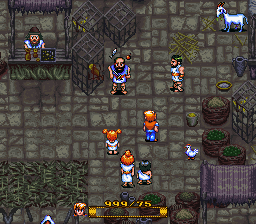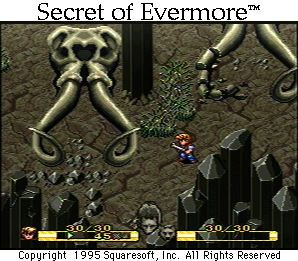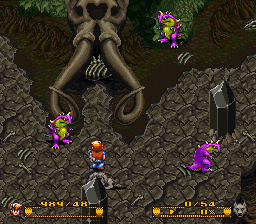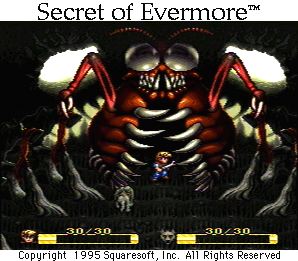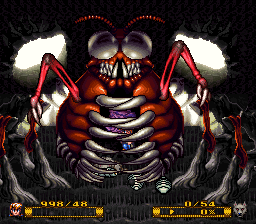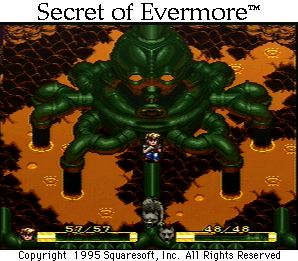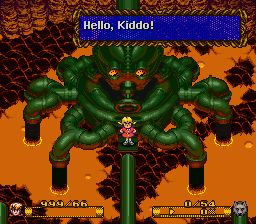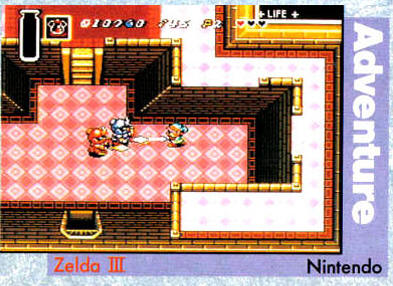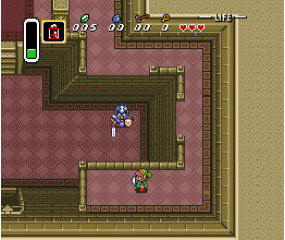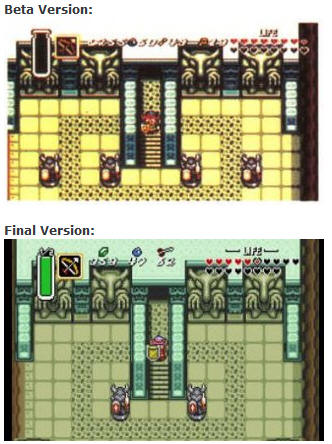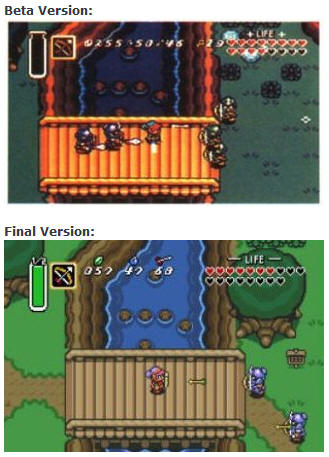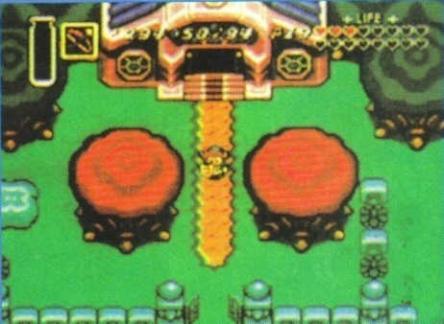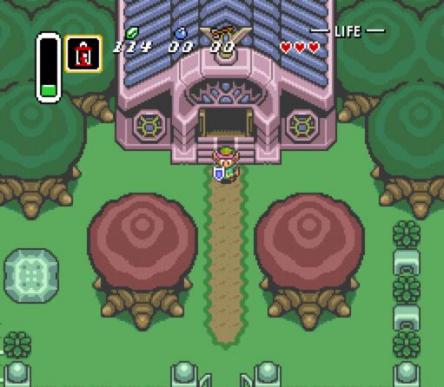![]()
In this article we can see a comparison between Secret Of Evermore beta screens and their final counterparts. During the game’s development Square USA made some interesting changes and probably the original story was a bit different from the one that we know.
Beta version
Final Version

The character’s bar was much different in the beta. While the area is essentially identical, with only little background differences, the enemies in the beta version are not the same as the final. The strange blue creature was completely removed, and we encounter raptors only much later in the prehistoric level. Also, you get the sword in Antiqua, the second area of the game.
Beta Version
I don’t recall this area anywhere in the game. The green dinosaur on the left was removed in the final version.
Beta Version
Final Version
Yet another enemy that was removed from the final game: the warrior with the pike at the center of the screenshot. Also, in the final version the machine is green (in the beta it looks to be black/grey) and there aren’t enemies in this area, maybe because the game’s story changed. The fake Fire Eyes (the girl at the center of the screen) didn’t exist or didn’t appear here in the beta version.
Beta Version
Final Version
An area with almost no changes. In the beta version the dog is still the prehistoric one.
Beta Version
This is a really strange beta screenshot. We can see what it looks like to be an early and much different version of Ivory Tower (or Ebon Keep when it is populated again). In the final game, the King is not here. Maybe the story was different ?
Here are some more screenshots from a pre-release version of Secret Of Evermore. The “dog’s bar” at the bottom of the screen has the “dog’s face” on the left side, while in the final version it’s on the right side.
Pre-release Version
Final Version
In these screenshots, we can see that this section of the market didn’t change at all. However, as in all pre-release and beta pics, the golden bar is different, and the dog is still the prehistoric one, while in the final version there are four different dogs.
Pre-release
Final Version
This area is different from the final version. There are not as many black crystals and there is only one skull. Also, the location seems much more barren. Thanks to Robert Seddon, that has found some infos from a developer / tester of the game, we know that they changed the Mammoth Graveyard because there was an issue with AI getting caught on the tusks. You can read more of these beta-infos on this old news: SoE beta infos
Pre-release Version
Final Version
We can see that in the beta versione there was no “heart” at the center of the spider.
Pre-release Version
Final Version
Again, as in the beta screenshot, the fake “Fire Eyes” girl is not here, but at least the machine is green now.
There are a couple of other beta screens in the gallery below, but they are not much different from the final version.
Images:

